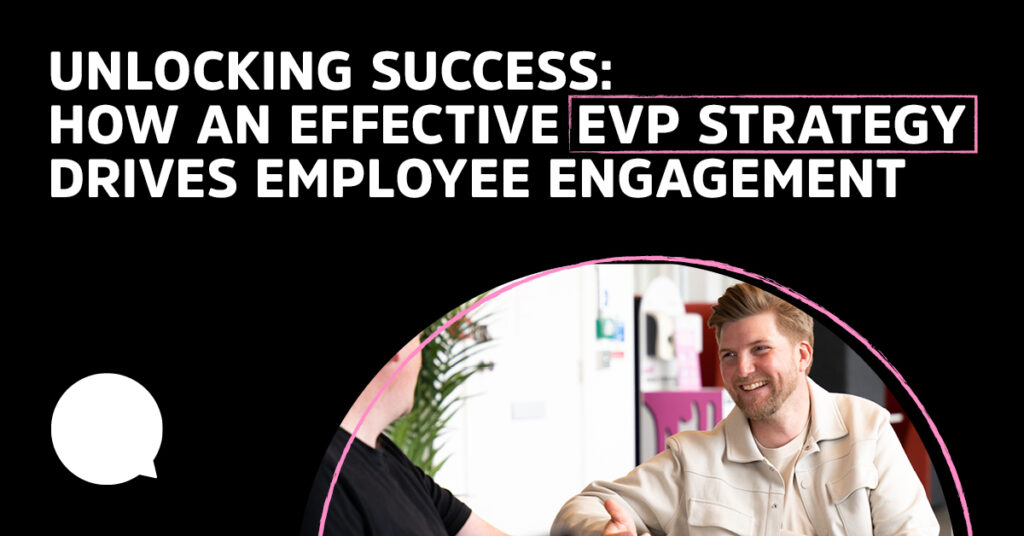Unlocking Success: How an Effective EVP Strategy Drives Employee Engagement
19th July 2023

Spending time on an Employee Value Proposition (EVP) strategy will help you get the best out of your employees. A well-thought-out strategy will gain you better retention, meaning you’ll save on recruitment in the longer term. Get this bit right and the results through your employee’s engagement and satisfaction will speak for themselves.
In this blog, we will explore seven themes that your EVP strategy should include.
7 Steps To EVP Heaven
Clear Communication
Your EVP strategy needs to communicate your organisation’s values, culture, and vision to employees. It’s about your company’s purpose, and how people’s roles contribute to its success. If employees are aligned with this, they will feel a sense of purpose making them more engaged in their work.
Alignment with Employee Values
If step one was about your employees understanding your brand, this step is about you understanding your employees.
Your EVP strategy should align with the values and aspirations of your staff. Think about how your benefits and rewards might resonate with their needs. More than pay, it could be through development opportunities, work-life balance, or a supportive work environment.
Enhancing Employee Experience
Your EVP strategy needs to focus on creating a positive employee experience throughout the employee lifecycle. This should be 360 degrees, from the recruitment process to onboarding, training and development, performance management, and recognition programs. A well-designed EVP strategy ensures that employees are supported, valued, and appreciated, leading to higher levels of engagement and satisfaction.
Growth
When employees see that their organisation invests in their growth, they are more likely to be engaged and satisfied in their roles.
With this in mind, your EVP strategy should highlight opportunities for personal and professional growth. This might include providing access to training programs, mentorship, skill development initiatives, and clear career advancement plans.
Competitive Compensation and Benefits
Employees who feel adequately rewarded for their contributions are more likely to be motivated and committed to their work. This means your EVP strategy should address compensation and include benefits that align with market standards. Fair and attractive compensation packages including salary, incentives, and comprehensive benefits, contribute to employee satisfaction and engagement.
Feedback and Recognition
Providing constructive feedback, acknowledging achievements, and offering opportunities for employees to contribute ideas help create a culture of appreciation and involvement. This, in turn, fosters higher levels of engagement and job satisfaction.
Emphasis on Work-Life Balance
Since the pandemic, there has been a huge demand for a better work-life balance.
Any well-designed EVP strategy needs to address this and should think about offering flexible work arrangements, and supportive policies. Promoting a healthy work-life integration enables employees to meet personal obligations and reduces stress, leaving you to get the most out of your happy, engaged staff.
Check out our recent case study for Sanctuary Care to see how our emotionally-driven campaign captured the unique personalities and authentic stories of residents, resulting in remarkable outcomes.
We’ve made EVP strategies for lots of clients. From doing the groundwork and finding out what a company’s employees’ values really are, to working with the senior team and strengthening their EVP, we believe that spending time getting this bit right will make lasting improvements for the future of any business.
And don’t just take our word for it either:
“Your employees’ experience directly impacts your customers’ experience. Invest in your EVP strategy to create a positive ripple effect throughout your organisation.”
– Richard Branson

